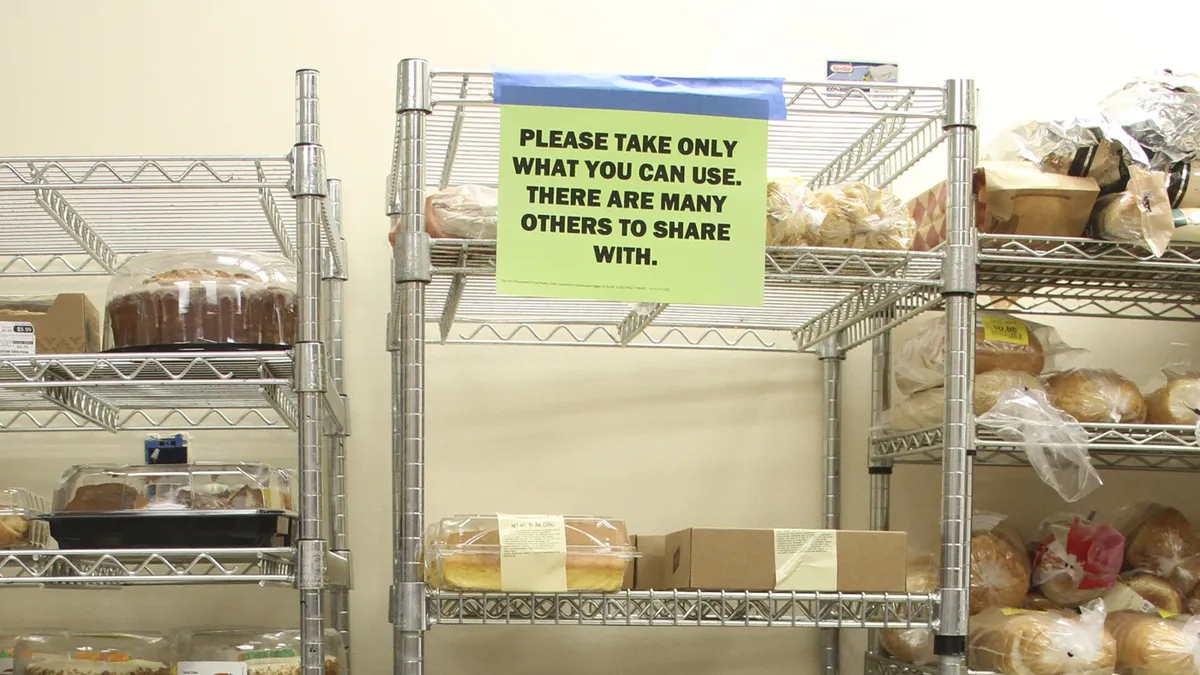
In just over a week, nearly 42 million people in the U.S. who rely on federal food assistance face the potential loss of their benefits due to the ongoing federal shutdown. Approximately 1 in 8 U.S. residents receives an average of $187 per month through the Supplemental Nutrition Assistance Program (SNAP). Among those affected is Shari Jablonowski, a 66-year-old widow residing outside Pittsburgh. She is deeply concerned about the $291 in food aid her disabled nephew receives each month, which she has relied on to support her family.
Shari has raised her now-adult nephew and two nieces as her own, but even before this crisis, her budget was precariously tight. "This month, I could not afford to pay … anything, gas or electric," she explains. Instead, she prioritized her monthly car payment to ensure she could drive to doctors' appointments and help her family members. With the potential loss of her nephew's food benefits in November, Shari fears for her heating needs and the upcoming Thanksgiving celebration. "I am very concerned I will not have heat," she states.
SNAP, formerly known as food stamps, is the largest anti-hunger program in the United States. According to Joel Berg, CEO of Hunger Free America, the vast majority of SNAP recipients include children, working individuals, older Americans, veterans, and people with disabilities. "If the SNAP program shuts down, we will have the most mass hunger suffering we've had in America since the Great Depression," he warns. For many, SNAP is the only direct financial assistance available, particularly after the significant reduction in cash welfare programs during the 1990s.
In addition to SNAP, another critical program, the Special Supplemental Nutrition Program for Women, Infants, and Children (WIC), which supports 7 million pregnant women and new parents, is also at risk of running out of funding. The Trump administration previously utilized $300 million in tariff funds to keep WIC operational, but those funds are expected to deplete soon. Some states have pledged to help cover this funding gap, although not all have the necessary resources.
USDA Secretary Brooke Rollins has warned that SNAP funding could run out on November 1. The USDA has informed states that all payments are currently on hold until further notice. The agency has attributed the funding crisis to ongoing political negotiations, with Democrats insisting that they will not support an end to the shutdown unless Republicans agree to extend tax credits for the Affordable Care Act.
In a statement to NPR, a USDA spokesperson emphasized the urgency of the situation: “We are approaching an inflection point for Senate Democrats. Continue to hold out for healthcare for illegals or reopen the government so mothers, babies, and the most vulnerable among us can receive timely WIC and SNAP allotments.” However, it’s important to note that undocumented immigrants are not eligible for Affordable Care Act benefits.
Advocates for food aid assert that the USDA has both the ability and the obligation to continue funding SNAP. According to Katie Bergh, a senior policy analyst at the Center on Budget and Policy Priorities, SNAP still possesses significant contingency reserves. While these reserves may not cover the entire funding gap, she believes the agency could legally transfer additional funds, similar to what has been done for the WIC program. Bergh emphasizes that the USDA has a legal responsibility to fund SNAP as it is an entitlement program, although officials have yet to confirm this legal obligation.
The origins of U.S. food benefits trace back to the Great Depression, and if funding lapses next month, Bergh warns, "We would be in uncharted territory." Many SNAP recipients may also face a double whammy, as new work requirements tied to the benefits will take effect on November 1, potentially pushing 2.4 million people off the program over the next decade.
In light of the impending crisis, states and food banks are mobilizing to provide assistance. The U.S. Conference of Mayors has urged the USDA to prevent disruptions to SNAP benefits, highlighting the program's role in stabilizing local economies. Each month, the federal government distributes approximately $8 billion in SNAP benefits, which are loaded onto a debit-like card for recipients to use at grocery stores and farmers markets. More than 250,000 food retailers depend on this income, according to Berg.
As uncertainty looms over the future of SNAP benefits, states are bracing for increased demand at food banks. For instance, Virginia has declared a state of emergency to provide food assistance, while Colorado's governor has called for donations to food banks. California has even deployed National Guard troops to assist food banks, reminiscent of efforts during the COVID-19 pandemic. However, advocates maintain that even expanded food charity cannot adequately replace the billions in federal funding that would be lost.
As Shari Jablonowski contemplates the possibility of a significant budget shortfall, she is already utilizing food pantries and plans to increase her visits. "There's nothing I can do to make money," she laments. "I'm not in the greatest of health." In the meantime, she is preparing by making large batches of soup and freezing some for later, showcasing the resilience of those facing the reality of potential food insecurity.